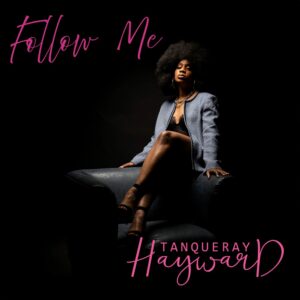Formed in modest fashion by a trio of teenage girls from Detroit’s Brewster housing project, the Supremes went on to become Motown’s biggest act of the 60s and the most successful “girl group” of an era. Originally called the Primettes (the female counterparts to the Primes – later called the Temptations) the group consisted of Diane (later Diana) Ross, Florence Ballard, Mary Wilson and Betty McGlown (later replaced by Barbara Martin, who left the group a trio by 1964). They came together in 1959 and soon shared the dream of many Detroiters of being signed by the upstart music label Motown. Upon their high school graduation their dream came true.
Unfortunately, being signed by a successful label didn’t result in immediate success. Over the course of 1962-64, the Supremes released a string of unsuccessful singles, working with different songwriters and alternating lead vocalists. In 1964 Gordy teamed them with Holland-Dozier-Holland and they released the melodic thumper “Where Did Our Love Go.” It shot to #1 on the Pop and Soul charts and established the recipe for the group’s success over the next half decade. Diana Ross became the de facto lead vocalist and HDH supplied a series of deceptively simple, infectious singles that highlighted Ross’s wispy voice and sing-songy backing vocals by Ballard and Wilson. The group released an unprecedented five straight #1 singles in a one year span, including “Baby Love,” “Stop! In the Name of Love,” “Come See About Me” and “Back In My Arms Again.”
Ross’s magnetism onstage and Berry Gordy’s growing personal obsession with her led to her becoming a first among equals, and by 1967 the group was relabeled “Diana Ross & the Supremes,” with the talented Wilson and Ballard taking an unfortunate back seat. The snubbed Ballard became bitter and engaged in erratic behavior, resulting in her being fired from the group, replaced by former Bluebell Cindy Birdsong. Ballard recorded one unsuccessful album for ABC Records before fading into obscurity and, sadly, drug abuse and poverty. Her death in 1976 was a blow to the Motown artists who remembered her as a very talented, soulful singer with a big voice.
A major obstacle for the Supremes occurred in late 1967, as Holland-Dozier-Holland left Motown to form their Invictus label and the Supremes (and the Four Tops) were left without their hit songwriters. But over the next two years the group continued to record hits (though a few misses too) with upcoming Motown writers such as Ashford & Simpson, including “Love Child” and “The Happening.”
Despite the growing friction within the group, the Supremes were bigger than ever and had conquered both Las Vegas and television. In 1968 they were also teamed successfully with the Temptations, both on TV and on record, and their duet “I’m Gonna Make You Love Me” became a classic smash.
By this time it was clear that Gordy intended to spring Ross as a solo artist, and a mini- “Farewell Tour” commenced at the end of 1969 and the beginning of 1970. The group’s final hit with Ross, the poignant “Someday We’ll Be Together,” was an appropriate coda to one of the most successful Soul group lineups of all time.
Ross’s solo career was huge and long-lasting, providing her with major success on record and in the movies for over fifteen years. The Supremes’ success without Ross was limited and fairly brief. In 1970-71, the group scored hits with “Stoned Love,” “Up the Ladder to the Roof” and “Nathan Jones,” then teamed with the Four Tops as the Magnificent Seven with the cut “River Deep, Mountain High” before the Tops left Motown. The hits then slowed down, and the group charted for the final time with 1976’s “You’re Driving My Wheel.”
The post-Ross period was also notable for frequent lineup changes. Ross was replaced by Jean Terrell (sister of boxer Ernie Terrell), who was in turn replaced by Scherrie Payne in 1974. Birdsong left temporarily in 1972 (Lynda Lawrence subbing) and for good in 1974 (replaced by Susaye Green). With Wilson as the sole guiding force of the group, the Supremes split for good in the late 70s, though various former Supremes and combinations thereof have since used the group name, especially in Europe.
Despite lingering animosities, Ross, Wilson and Birdsong reunited briefly for a performance at the Motown 25 special in 1983. However, issues around the performance rekindled bad feelings and nixed any lasting reunion. Then, in 2000, with her solo career foundering, Ross announced that she would be leading a Supremes “Return to Love” reunion tour. However mutual distrust and a dispute over the sharing of revenues doomed the reunion from the start, and Ross chose to stop discussions with Wilson and Birdsong and instead attempted to bring in Lawrence and Payne for the tour. It was a public relations nightmare for Ross and the tour was a monumental failure; it was cancelled after a few low-selling dates.
In retrospect, the Supremes’ light burned comet-like, shining incredibly brightly and briefly. And while their massive hits from 1964-69 have not aged as well as, say, the Temptations work of that period, by any measure they still must be considered as among the greatest pop/soul hits of that era and the group – Diana Ross, Flo Ballard, Mary Wilson and Cindy Birdsong – one of the great Soul groups of all time.
By Chris Rizik










